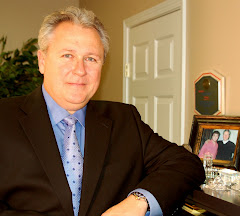Drowsy driving causes more than 10,000 crashes each year, leading to 40,000 injuries and 1,550 deaths, according to the National Highway Traffic Safety Administration. Yet, of additional concern, the Liberty Mutual/SADD survey found an overwhelming number of teen drivers often rely on other mostly ineffective activities - some even distracting or dangerous - to help combat symptoms of drowsiness, including:
- Playing loud music (49 percent)
- Talking with passengers (45 percent)
- Rolling down the window (27 percent)
- Talking on their cell phone (22 percent)
- Drinking energy drinks (19 percent)
- Drinking coffee (14 percent)
- Speeding (11 percent)
- Text messaging (11 percent)
Of all of these choices, the National Sleep Foundation considers only caffeine - such as coffee or energy drinks - as a possible countermeasure to avoid falling asleep at the wheel. However, while the equivalent of two cups of coffee can increase alertness for several hours, it should not be relied on to overcome sleep deprivation.
"We know these methods are not reliable for teens or adults," adds Melton. "Sleep loss or fatigue impairs driving skills such as hand-eye coordination, reaction time, vision, awareness of surroundings, and judgment".
Indeed, the National Sleep Foundation says drowsy driving can be just as dangerous as impaired driving. Unlike an impaired driver, a person who falls asleep while driving has no control of the vehicle and cannot take any measures to avoid a crash. The combination of sleepiness, inexperience, and lifestyle choices including tendencies to drive at night and in the early morning hours puts young adults at risk for drowsy-driving crashes. Prevention is key. Sufficient sleep is the best antidote to drowsy driving. The National Sleep Foundation recommends that teens should be getting between 8.5 and 9.5 hours of sleep to be fully rested, but because of classes, after school activities, and social lives most teens are getting much less. The Liberty Mutual/SADD study found that teens get an average of 7.4 hours of sleep per night, the least amount (7.2 hours on average) coming on school nights (Sunday through Thursday).
"Unfortunately, 'early to bed, early to rise' doesn't sync well with suddenly nocturnal teens who are balancing late nights, early mornings, and jam-packed schedules," said Stephen Wallace, SADD chairman/CEO. "They want to do it all, but our job is to help them regulate competing demands in a way that ensures they get the sleep they need to be safe behind the wheel."
The National Sleep Foundation also supports these tips to help combat drowsy driving:
Allow time for breaks on long trips - about every 100 miles or two hours Use the buddy system - ask your passenger to stay awake during the drive to help keep you awake and to share the driving responsibilities.
If sleepiness sets in while driving, prevent a crash by pulling over to find a safe place to take a nap or sleep for the night.
Source: Liberty Mutual/SADD


No comments:
Post a Comment